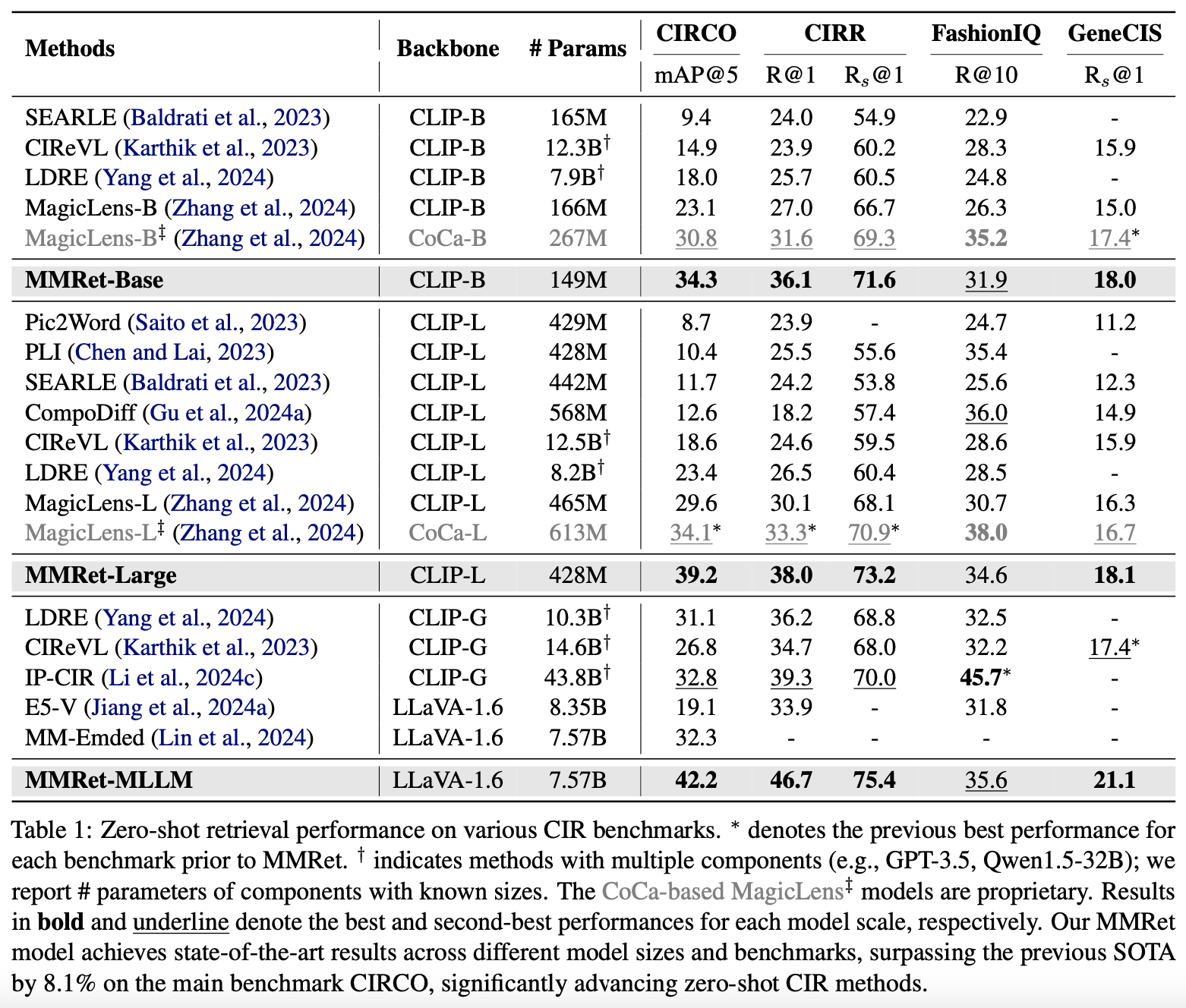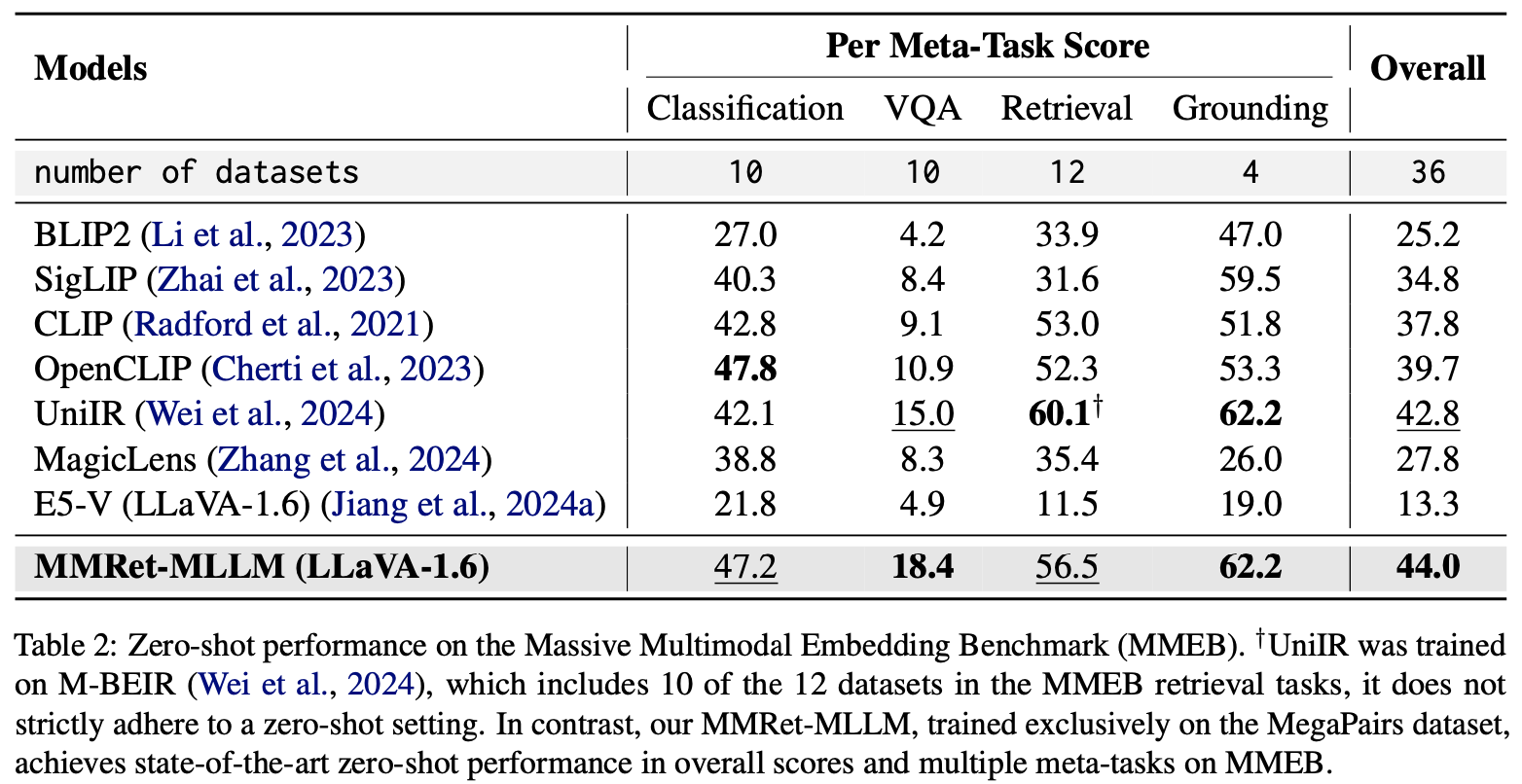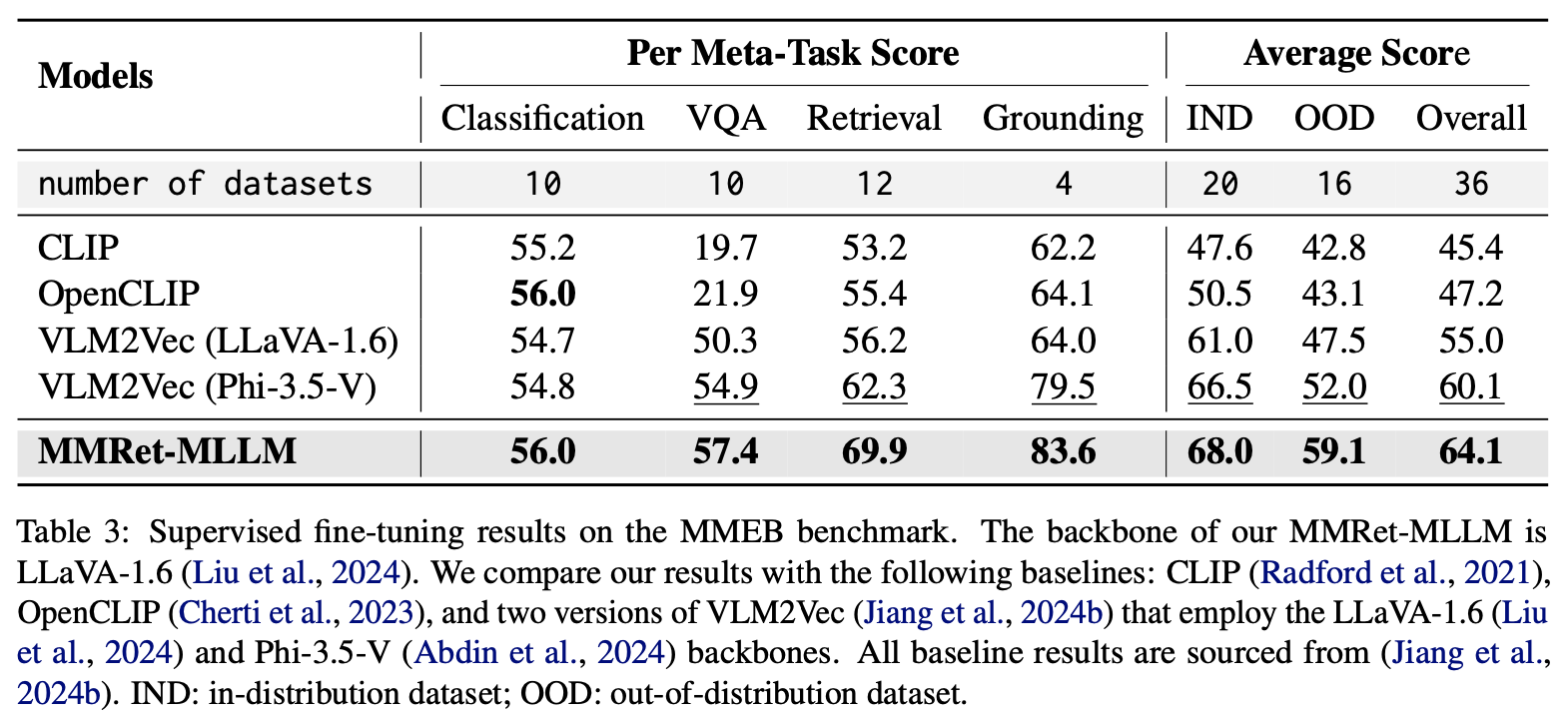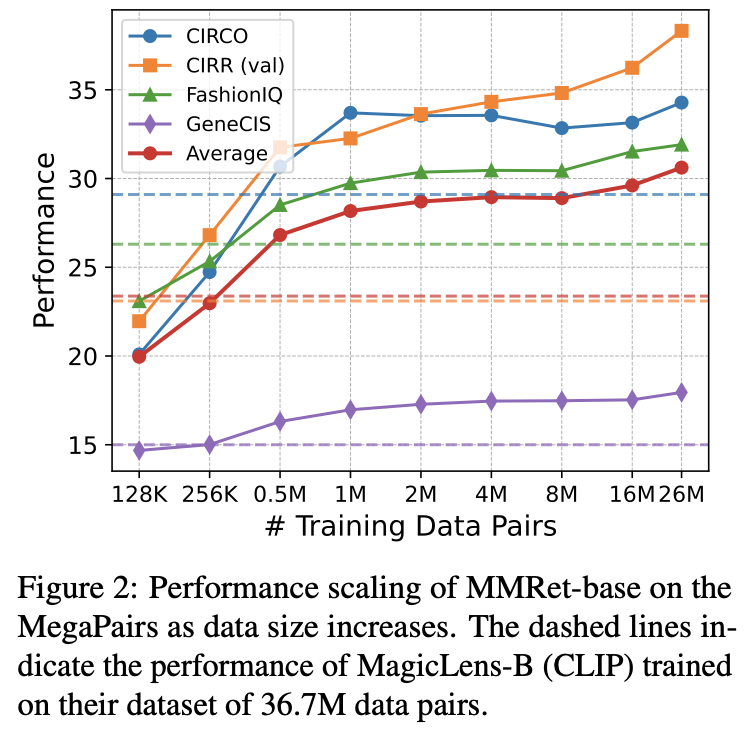MegaPairs: Massive Data Synthesis For Universal Multimodal Retrieval
News
2024-12-27 🚀🚀 MMRet-CLIP models are released in Huggingface: MMRet-base and MMRet-large.
2024-12-19 🎉🎉 Release our paper: MegaPairs: Massive Data Synthesis For Universal Multimodal Retrieval.
Release Plan
- Paper
- MMRet-base and MMRet-large models
- MMRet-MLLM model
- MegaPairs Dataset
- Evaluation code
- Fine-tuning code
Introduction
In this project, we introduce MegaPairs, a novel data synthesis method that leverages open-domain images to create heterogeneous KNN triplets for universal multimodal retrieval. Our MegaPairs dataset contains over 26 million triplets, and we have trained a series of multimodal retrieval models, MMRets, including MMRet-CLIP (base and large) and MMRet-MLLM.
MMRets achieve state-of-the-art performance on four popular zero-shot composed image retrieval benchmarks and the massive multimodal embedding benchmark (MMEB). Extensive experiments demonstrate the efficiency, scalability, and generalization features of MegaPairs. Please refer to our paper for more details.
Model Usage
1. MMRet-CLIP Models
You can easily use MMRet-CLIP models based on transformers
import torch
from transformers import AutoModel
MODEL_NAME = "JUNJIE99/MMRet-base" # or "JUNJIE99/MMRet-large"
model = AutoModel.from_pretrained(MODEL_NAME, trust_remote_code=True) # You must set trust_remote_code=True
model.set_processor(MODEL_NAME)
model.eval()
with torch.no_grad():
query = model.encode(
images = "./assets/cir_query.png",
text = "Make the background dark, as if the camera has taken the photo at night"
)
candidates = model.encode(
images = ["./assets/cir_candi_1.png", "./assets/cir_candi_2.png"]
)
scores = query @ candidates.T
print(scores)
2. MMRet-MLLM Models
Will be released soon.
Model Performance
Zero-Shot Composed Image Retrieval
MMRet sets a new performance benchmark in zero-shot composed image retrieval tasks. On the CIRCO benchmark, our MMRet-base model, with only 149 million parameters, surpasses all previous models, including those with 50 times more parameters. Additionally, MMRet-MLLM achieves an 8.1% improvement over the previous state-of-the-art model.

Zero-Shot Performance on MMEB
MMRet-MLLM achieves state-of-the-art zero-shot performance on the Massive Multimodal Embedding Benchmark (MMEB), despite being trained only on the ImageText-to-Image paradigm. This demonstrates the excellent generalization capability of MegaPairs for multimodal embedding.

Fine-Tuning Performance on MMEB
After fine-tuning on downstream tasks, MMRet-MLLM maintains its leading performance. Notably, it surpasses the previous state-of-the-art by 7.1% on the MMEB out-of-distribution (OOD) set. These results demonstrate the robust generalization capability of MMRet-MLLM and highlight the potential of MegaPairs as foundational training data for universal multimodal embedding.

Performance Scaling
MegaPairs showcases scalability: MMRet-base improves as training data increases. It also demonstrates efficiency: with just 0.5M training samples, MMRet-base significantly outperforms MagicLens, which uses the same CLIP-base backbone and was trained on 36.7M samples.

License
The annotations for MegaPairs and the MMRet models are released under the MIT License. The images in MegaPairs originate from the Recap-Datacomp, which is released under the CC BY 4.0 license.
Citation
If you find this repository useful, please consider giving a star ⭐ and citation
@article{zhou2024megapairs,
title={MegaPairs: Massive Data Synthesis For Universal Multimodal Retrieval},
author={Zhou, Junjie and Liu, Zheng and Liu, Ze and Xiao, Shitao and Wang, Yueze and Zhao, Bo and Zhang, Chen Jason and Lian, Defu and Xiong, Yongping},
journal={arXiv preprint arXiv:2412.14475},
year={2024}
}
- Downloads last month
- 649
Model tree for JUNJIE99/MMRet-large
Base model
openai/clip-vit-large-patch14




